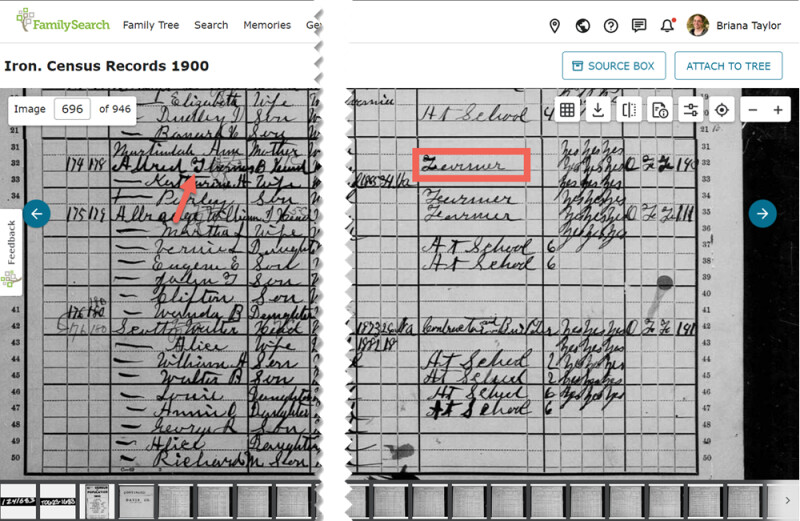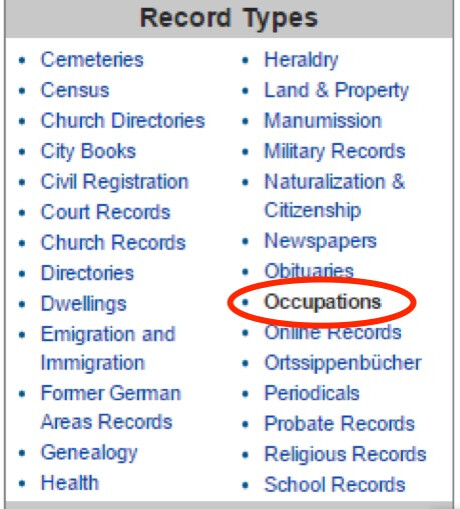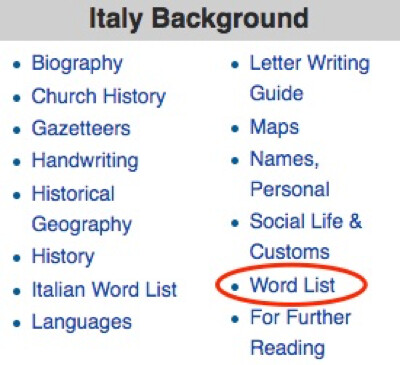Ever wonder if your family tree was filled with sturdy, salt-of-the-earth farmers; skilled, meticulous craftsmen; hardworking laborers; or perhaps someone adventurous, such as a sailor on the rough sea?
Many people enjoy learning about their ancestors’ occupations, but did you know that this kind of research can do much more than just satisfy your curiosity? It can take your genealogy research to the next level.
Why Study Your Ancestors' Occupations
So why are occupations so important anyway? And what can knowing about occupations do for you as a genealogy researcher?
It can do a lot! Knowing this information can help you in at least the following ways:

- It can help you keep your ancestors distinct. Occupations can help you recognize your ancestors in different records you look at—particularly if you have an ancestor with a common name.
- You can gain insights into your ancestors’ lives. By doing a little research on your ancestors’ occupations, you can understand what their daily lives were like, as well as get a good idea of their economic standing in the community.
- It can help you identify other records to search. Records were sometimes created for certain occupations. Finding these can lead to new discoveries and help you extend your family tree.
How to Discover Occupations Without Research
If research sounds daunting to you, that's okay! There are some simple ways to start discovering what your ancestors did for a living without hours of intensive research. You may need to look closer at records and information that have already been found—or you might be the first to record what one of your family members knows. Here are some great first steps.
Ask Living Relatives About Their Job History

Before getting deep into research, someone in your family might already know the information you're searching for. Do you know what your grandparents did for a living? What about your great-grandparents? What were their first jobs? How old were they when they started working? What were their favorite jobs?
Sit down with your parents, grandparents, and great-grandparents, or with someone who knew them. Ask these questions, and record the answers. With the FamilySearch Memories app, you can make voice recordings to preserve the stories in their own voice.
Look at Your Ancestor’s Page on FamilySearch.

FamilySearch has a shared community tree. This means that information about your ancestors (such as their occupation) might already be there, documented by other users. All you have to do to get started is create a free FamilySearch account. Once you add deceased ancestors, the Family Tree will try to match them with existing ancestor pages and also show you the known connections—any parents and children that have been added for them.
How to Look for Occupations on a FamilySearch Ancestor Page
Pick an ancestor you want to learn about, preferably one with sources, and click to open their full page.
Tip: Use the fan chart view of your family tree to see how many sources each ancestor has before you choose a page to look at. This can lead you to more well-researched ancestors.
Glance through the Details tab on your ancestor's page to see if an occupation is listed. Especially search in the Other Information section for Custom Facts, and scroll down to the bottom to read the Brief Life History.


Use the Sources Tab to Find "Hidden" Ancestor Occupations
- Don't forget to also visit the Sources tab, and look at the historical records that have already been matched by other users to your ancestor. These may have occupations listed that no one has yet added to the Details tab for your ancestor.
- Open up a likely source, and skim the record information. (Later in this article, we will go into more detail about which record types might list occupations.) Then look for an option to View Original Document, and click on it. Most of the time, you'll have to look at the document image to find occupation information. Sometimes the typed information on the record (called the record index) only gives certain fields, like names and dates. Censuses might have recorded the occupation, for example, but the index doesn't usually include it. You can still look at the image to find the information you need.
- On the original document image, find your ancestor's name, and read all of the information recorded about that ancestor to see if an occupation is listed. It might have been hidden there this whole time, waiting for you to find it!


Doing Your Own Family History Research on Occupations
How do you locate information about your ancestors’ occupations? Learn which types of historical records even include information about occupations. Then you can use the FamilySearch Wiki to get more detailed, country-specific information for the records where your ancestor lived. Don't forget to use what you know to discover what you don't know!
Records That Include Occupations
Whether or not the occupation is listed on a record will depend on the country of research, the time period, and the thoroughness of the person filling out the document. Here are some record types that sometimes include the person's occupation:

- Census Records. Censuses in many countries tend to include occupation. The census is the easiest place to check for occupation.
- Birth Records. Birth records will sometimes list the father's occupation. If you want to know a man's occupation, check the birth records of his children.
- Death Records. Sometimes, the occupation of the deceased is listed on their death record.
- Church Records. In some countries and at some points in history, information about births, marriages, and deaths was recorded and kept by church clergy instead of by the government. Some of the templates that the clergy would fill out for these life events would include occupations of the individual or of the individual's parents and spouse.
- Obituaries. Obituaries can tell you about the person's work experience throughout their life. It might even have stories about their job.
- City Directories. City directories list many of the businesses in that city for a given year. You may see the names of the business owners as well.
- Military Records. If someone was drafted into the military, their draft paperwork might list their previous occupation. You can see this on World War I and II draft registration cards from the US. Military pension records might also list the occupation of the individual after they left military service.
- Passenger Lists. Sometimes, ship passenger lists give occupation information about the passengers on board. You can also use these lists to find sailors on board if your ancestor was a sailor.

- Probate Records. Probate records and wills might list the occupation of the deceased or the occupations of the heirs inheriting the possessions and land of the deceased.
This record from the 1841 English census is a great example of getting occupational information from historical records. It tells us this James Harris was a blacksmith, and this makes it easier to distinguish him from any other James Harris from the same area. Plus, knowing James's occupation gives us an insight into his life.
Why Don't All Records List Occupation?
There are various reasons why a record collection or particular record may or may not list the occupation:
- Every country is different.
- Governments, churches, and other organizations may have decided to collect different information.
- The information collected can change over time.
- The government official or clergyman might not have filled out all fields.

Government officials and clergymen were often the ones who filled out records. Also, the person providing the information for the form was not always the person who the record was about.
For census records, if the family was not at home when the census taker came around, the census taker might have asked a neighbor. The neighbor might not have known all of the information or the correct information about the family, so it could be listed incorrectly or not at all on the census. Some record keepers also chose not to fill out every required field on a form.
If the church or government did not have a standardized list of information they wanted, it was up to the record keeper to decide what information to write down. Some clergymen only included the baby's name and birth date on christening records (the bare minimum of information), while other clergymen gave the names of parents, parents' occupations, parents' birthplaces, and more on their christening records.
Every country prefers to collect different information, and the priorities of what information to collect change over time. For example, the first United States censuses only named the head of the household and gave a tally mark for everyone else living there. Over time, the census included the name, age, and gender in addition to other information about every individual in the household. You might have an ancestor who is just a tally mark in the 1840 US census but has her full name written out in the 1860 census. The same intricacies of different information being recorded at different times apply to every country.
So how can you learn the intricacies of your research country? Luckily, the FamilySearch Wiki was made exactly for that purpose!
Help from the FamilySearch Wiki

Before beginning your research, find the FamilySearch Wiki page for the place where your ancestor lived. You can pick the country and then further filter down to state, province, or county. You can get to these wiki pages on the main navigation bar on FamilySearch.org by clicking Search, and then clicking Wiki. Then, in the search bar on the Wiki home page, type the name of the place you’re interested in, or select it by clicking on the country on the map.
Once you have located a country or state’s wiki page, find the Record Types box on the right side of the page. Here, you can click on a record type to learn about the country-specific information for that record type. For example, for census records, it will tell you all of the years that country has taken a census, which ones are available to the public, and the information recorded for each census. It will even link you to where you can view the records!
This will save you so much time because then you can narrow your search to the census years in which occupation was recorded. This same kind of information is available if you click Civil Registration, or a different record type. If FamilySearch does not have digitized versions or an index of the specific record, the wiki will tell you where else you can find it online.

If you click Occupations in the Record Types Box, you'll get information about specific occupations. The kind of information you’ll find here varies from place to place. Some examples of information you might find include the following:
- Historical backgrounds and general descriptions of major occupations in the area.
- Lists of occupational records and how to locate them, including links to many collections online through FamilySearch.org and other websites.
- Explanations of old occupations that may not exist anymore and links to websites that specialize in defining old occupations.
For countries where you don't speak the language, be sure to click the Word List to find translations of common occupations found in the records. It can be difficult to find the occupations box on a Swedish census if you don't know the Swedish word for "occupation"!

Record Your Discoveries
Now that you've learned something new about your ancestors, don't keep it to yourself! Record what you learn about their occupations on their ancestor pages in the Family Tree. You can create a custom fact and give details about the occupation and which records you found that listed the occupation.
In the Memories tab, you can also add stories and longer text. Write a paragraph or even a few about what you learned and what the occupation taught you about your ancestor.
Have fun discovering what your ancestors did for a living!






